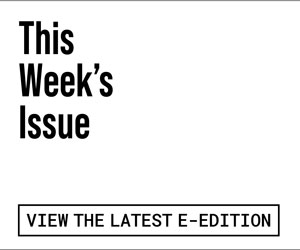Grass is always greener on other side of the livestock fence
A recent letter to the editor in the Pacific Sun urges readers to stop buying beef or dairy, claiming that they are leading causes of global warming. Although the author did not specify what aspect of raising either was responsible, he was apparently not aware that one of our best hopes for reducing global warming, already proven, is making our grasslands more productive. Large swaths of grass hold promise as one of our most efficient, effective ways of reducing CO2 in the atmosphere, a strategy now recognized in Sacramento … see www.marincarbonproject.org.
As a biodynamic gardener trained at Green Gulch Farm, I have recently been enjoying seeding native perennial grasses: Bromus carinatus, or California Brome and Elymus glaucus, or Blue Wildrye from Larner Seeds. According to owner, Judith Larner, the bunchgrasses native to California, “serve many useful purposes for the home gardener. They are excellent bank holders, and with their deep fibrous root systems, are an important part of the wildflower meadow. Many of them lend themselves to purely ornamental purposes as well. We hope that these grasses, once an integral part of the ecology of the West, will again be grown and appreciated.”
I am somewhat enchanted, taken in with the discovery of learning from these very elemental plants, whose foundation, whose very nature seems to be to “knit up” the soil, convert sunlight to food and provide forage for a variety of animals, from insects to elk. Here in West Marin, there is a renewed focus on livestock with Rebecca Burgess and Nicolette Hahn Niman both leading the way in developing locally sourced, ecologically sound grass-based economies. Burgess’ focus is on sheep and wool, and the working of wool into yarn, citing an ecologically sound wool mill locally, while Niman’s is on grass-fed beef.
Although my gardening background is in French Intensive Biodynamic Horticulture as taught by Alan Chadwick, the “father of organic farming in California,” and in particular growing cut flowers for the altars of the Zen Center and the downtown San Francisco markets, I am much taken with the presence and nature of grasses, learning how they grow, what they respond to, in what ways their use can be promoted, in a home garden project or elsewhere. The more time I spend with them, the more I sense ways in which they are a domain unto themselves, as they tend to “knit up the soil” and create grassland, the primal connection between earth and sky, air and sunlight.
The conversion of grass, through herbivory, to usable products, is fundamental to the evolution of human ecology. Managed well, grazing sustains soil productivity and creates more soil by increasing the rate at which the grass plant uses sunlight to draw carbon from the air to manufacture its sugars and more complex carbohydrates. While industrial agriculture, divorced from natural solar-driven cycles of photosynthesis and decay, is unquestionably contributing to climate change, holistic agricultural approaches, including livestock agriculture, working within those cycles, can play a powerful role in reversing global warming by enhancing the rate at which CO2 is removed from the atmosphere.
Katharine Cook, West Marin







